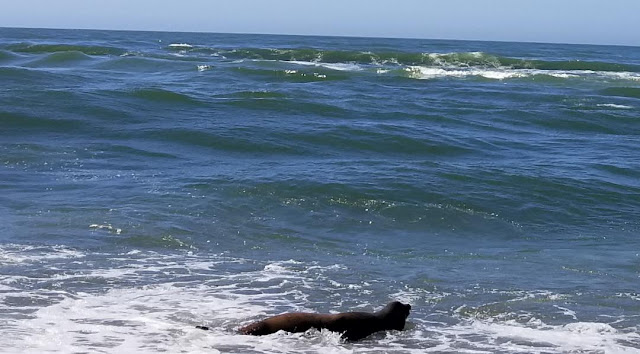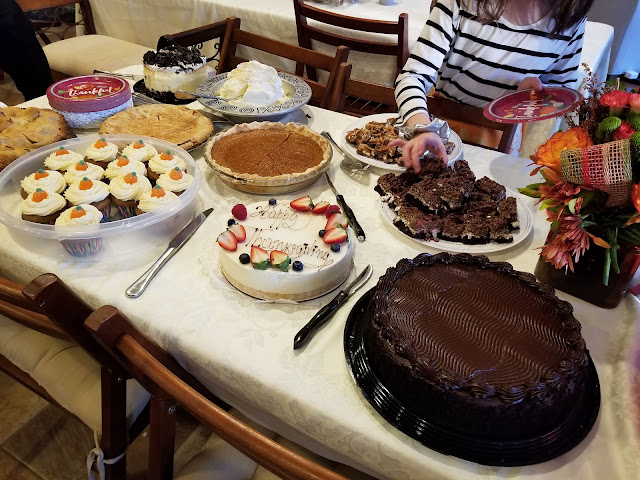On the Oregon Trail
The northern California coast, the Oregon coast, the Washington coast were some of the most beautiful places we have seen in the past year and a half. There were places where we said, “Let’s put a house right here so we have this view from our porch every morning.”
Traveling in the comfort of our motorhome, with its king size bed, shower, controlled temperature, hot and cold water, refrigerator, gas stove, washer and dryer and closets and drawers, we have thought a lot about how differently the Native Americans lived who made the west their home and how the earliest white settlers traveled when they came west.
 |
| Sometimes the dead bugs have to be cleaned off the windshield and mirrors |
 |
| Fog over the Kalamath River every morning where we were parked on an Indian reservation. |
I've tried to imagine riding in a covered wagon. The cacophony of
noise from the pots and pans and tools and squeaky wheels. Maybe a somewhat
comfortable seat on the 50 lbs of beans or flour that gradually shrank as you
traveled. The bouncing and jostling from the wheels on an uneven trail. The heat and the sun. The rain and being cold and wet. You had
to be really, really exhausted to ride inside. Although you hoped for a turn
on the seat beside the driver, you mostly walked- maybe 20 miles per day.
I’ve thought a lot about the types of persons who left the
security of family and home to head west mostly during the 1840's to 1860's. Almost
everyone got to Independence, Missouri and from there took one of 3 main
trails. There was the Oregon Trail- headed north, the Mormon Trail – headed
west, and the California Trail, headed to Southern California.
They could not be very poor because the provisions and wagon
and horses or oxen cost a lot. Men probably knew how to shoe
a horse, repair a wheel, shoot a gun, and drive a team of oxen. Women knew how to make biscuits and bacon in a frying pan, mend clothing, chop
wood, and start a fire. And to avoid being sexist, it could have been the other way around. They also hoped there was someone in their caravan who knew how to stitch a wound and
deliver a baby.
Did they think about the fact that no matter where they
ended up they were going to be stealing land from the native Americans? Did
they take for granted they may have to kill them along the way? Why did they
feel so entitled?
At one RV park we were on an Indian reservation. It was next to where the Klamath river flows into the Pacific Ocean. We enjoyed standing on a beach and watching seals fish in the waves at Klamath Falls.
 |
| Steve ran his drone over the 60+ seals on the small peninsula leading into the Klamath River. |
One of the most beautiful places in the U.S. has to be
Crater Lake in southern Oregon. I remember my dad saying, “Yes, you should see
that someday.” He and mom had seen it in the early 50’s. Crater Lake is a
brilliant blue lake high above sea level - 6178 feet, 3 miles wide and
created when a volcano top caved in. In the summer one walks on snow-covered
trails around it and are astounded by the beauty. The roads to it are frequently
blocked by snow in the winter.
 |
| The snow layered in waves on the slope. |
Traveling up the coast we visited Oregon lighthouses and
learned about the hundreds of people who died each year trying to land their
boats on the coast or get supplies from San Francisco to the coast. Lighthouses were life- saving structures built between 1870 and 1896 by the U.S.
Army Corps of Engineers. To land safely on the perilous Oregon coast you needed
a good knowledge of tides, good navigational skills, clear skies, good weather,
the wind in the right direction, and a lighthouse to keep you away from
treacherous rocks. Many ships were dashed to pieces on the rocks. One
lighthouse we visited had a skeleton of an ancient boat still on the shore. Up
until the 1960’s when automated lights were put in, the lighthouses were run by
individuals willing to live and keep their family in isolated wild places. And
curious visitors had to be hosted many days.
 |
| Yakuna Lighthouse |
 |
| Cobble Beach with singing rocks. |
 |
| These rocks sing as the waves pass over them. |
We enjoyed Upper Rogue River and Falls.
We had learned to love Tillamook ice cream -especially Mud
Slide and Birthday Cake flavors – so we thoroughly enjoyed a tour of the
Tillamook cheese and ice cream factory in Tillamook, Oregon.
 |
| Cheese packing stations |
 |
| Lots of cheeses for sale |
 |
| Cheese and ice cream flavors could be sampled |
Tillamook is also where I visited a Quilt and weaving art shop. There were also "barn quilts" on building and businesses all over town. I really enjoyed seeing these.
 |
| Swan woven rug |
 |
| An example of the many wooden quilts on buildings. |
 |
| Fabric art at the quilt museum |
 |
| Amazing weaving in progress |
 |
| A rug in process |
 |
| Believe it or not this is all fabric on a quilt. |
When you get to the northwest corner of Oregon, the rough but beautiful coast has many sights to see. There are the Lewis and Clark National Historic parks and the entrance to the grand Columbia River. At Astoria we drove over the bridge to the south of Washington state and hiked along the coast.
One could spend weeks in this area- much like the Acadia National Park in Maine - and see awesome ocean views, hike the wild woods and imagine what it was like to be a new arrival from the Oregon Trail.
 |
| The Lighthouse at Ilwaco, Washington |
Between Oregon and Washington is the entrance to the huge and awesome Columbia river. What is amazing to think about is how many covered wagons attempted to cross the Columbia River. There are many tales of loss of life and property during the attempts. Columbia River remains an important shipping, commerce, and recreation area for Oregon and Washington.
 |
The Wide Columbia River. On much of its coast we could imagine what it was like it was 200 years ago.
Going back up to spend more time along the coast of Oregon someday would make both of us happy. For now, we remember the beauty of the wild coast, its rocks and trees. We remember the cheese, the ice cream, and the lighthouses. We remember we are so privileged to be in an RV rather than a covered wagon.
|






































Comments
Post a Comment